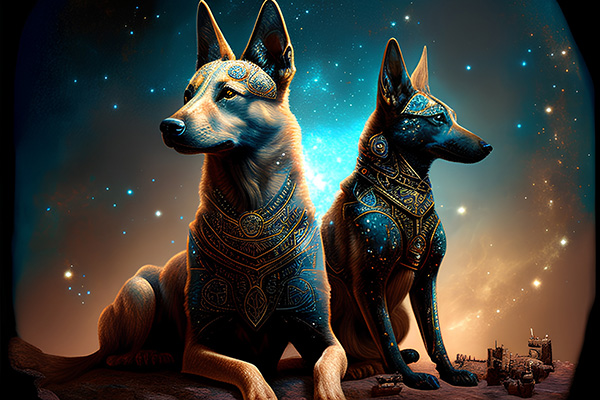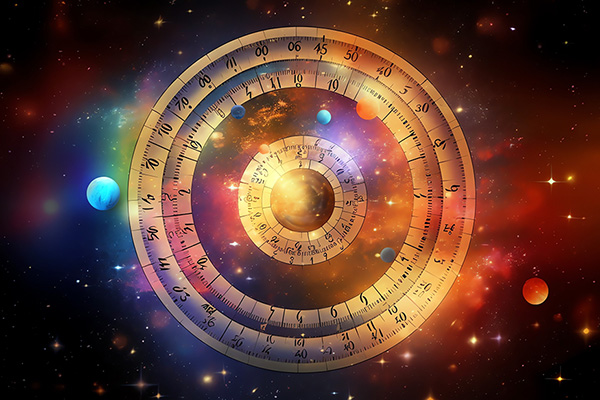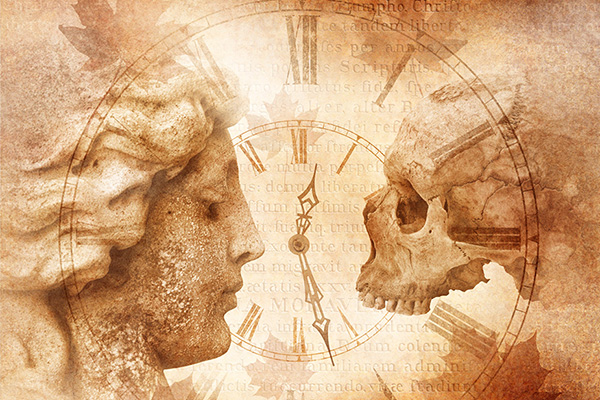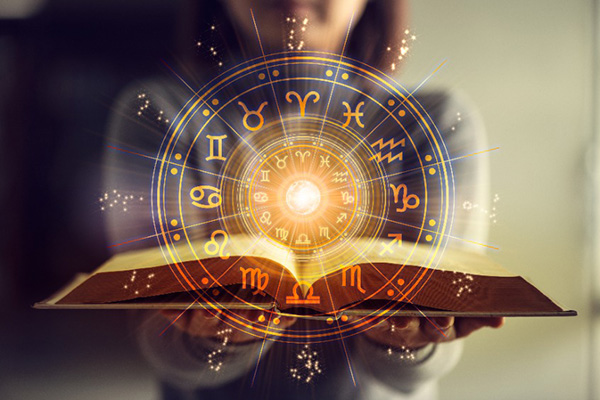ancient greece
The Mythical Legacy Of Dogs
 The cat isn’t the only pet with a long history of myth and legend. Dogs have played an important role in human culture and spirituality for centuries.
The cat isn’t the only pet with a long history of myth and legend. Dogs have played an important role in human culture and spirituality for centuries.
The dog, or “man’s best friend,” is the subject of many magical tales, wisdom traditions, and folklore throughout the world. Like the cat, dogs were companions of the ancients and are still considered symbols of loyalty, courage and protection.
In Greek mythology, dogs are associated with the goddess Hecate, who is also known as the “dog goddess.” She is the goddess of witchcraft, magic, and the crossroads, and is typically depicted in ancient Greek art with a pack of dogs at her side.
Today, the brightest star in the night sky, Sirius, is also known as the Dog Star, because it is traditionally seen as the protector of the night sky. In many cultures, Sirius has been associated with dogs because of its brightness and prominence.
Perhaps the most famous dog in Greek mythology is Cerberus, the three-headed guardian of the underworld. Cerberus not only prevented the dead from leaving the underworld, but also the living from entering it. He was finally captured by the hero Heracles in one of his twelve labors. Another famous Greek dog is Laelaps, a swift dog given by the god Zeus to the hunter Actaeon. Laelaps was so fast that he could catch any prey, but he was also cursed to always catch his prey.
The Spiritual Symbolism Of The Circle
 The circle has a profound and universal meaning in spirituality across cultures and belief systems. It symbolizes a variety of spiritual concepts and offers insights into the interconnectedness of life, the cyclical nature of existence, and the infinite potential for growth and transformation.
The circle has a profound and universal meaning in spirituality across cultures and belief systems. It symbolizes a variety of spiritual concepts and offers insights into the interconnectedness of life, the cyclical nature of existence, and the infinite potential for growth and transformation.
The circle represents unity and oneness. It is a symbol of completeness because it has neither beginning nor end. This circular continuity reflects the eternal nature of the soul and the interconnectedness of all living beings.
In Native American spirituality, for example, the medicine wheel represents balance and harmony between all aspects of life, including the physical, emotional, mental, and spiritual. Similarly, in Hinduism, the concept of samsara refers to the continuous cycle of birth, death and rebirth, with the circle symbolizing the eternal journey of the soul.
In Christianity the circle represents eternity and sacred union. It is referenced in the Bible as the shape of heaven, and as the beginning and ending of time. For Christian couples, the unending circle of a wedding ring is also the symbolic expression of their sacred, eternal union.
The Personal Power Of Your Life Path Number
 Numerology is based on the idea that there is a mystical relationship between numbers and destiny. It originated from the ancient practice of assigning numerical values to words and names, and attributing spiritual symbolism to such numbers.
Numerology is based on the idea that there is a mystical relationship between numbers and destiny. It originated from the ancient practice of assigning numerical values to words and names, and attributing spiritual symbolism to such numbers.
In Ancient Greece, the mystic Pythagoras further developed this concept proposing that numbers are divinely inspired creations that carry sacred codes. This led to a system of divination that is still used today, and Pythagoras is therefore considered the father of modern numerology.
There are different systems of numerology that share some common principles, such as Chaldean, Pythagorean, Kabbalistic and Chinese numerology.
Numerology, however, is not fortune-telling in the traditional sense, as it does not simply attempt to prophecy or predict the future. Instead, numerology aims to reveal information about our personality, talents and gifts, our life path and purpose, as well as our potential and destiny.
In numerology, each of us has a set of unique, individual numbers known as our core numbers. These numbers are calculated from our date of birth, letters of our name, and other personal information. By analyzing the core numbers associated with us, we can gain insight into our personality, talents, challenges, opportunities, and spiritual lessons.
The Modern Practice Of Spiritual Healing
 In a world driven by science and technology, the value of our spiritual health is rarely recognized or appreciated these days, yet it is an essential aspect of our holistic health and well-being.
In a world driven by science and technology, the value of our spiritual health is rarely recognized or appreciated these days, yet it is an essential aspect of our holistic health and well-being.
The truth is that spiritual healing has been practiced since the beginning of time to promote physical, emotional, mental and spiritual well-being. Our ancestors were much wiser in this regard. They had a holistic view of health and wellness that not only focused on the physical and mental, but also honored the spiritual or metaphysical aspects of our existence.
In ancient Egypt, for example, illness was treated as a battle between good and evil, and magical remedies were used in addition to herbal medicines. In ancient Greece, holism underpinned everything, and the soul, mind, and body were considered one.
In Traditional Chinese Medicine, a holistic system practiced for at least 23 centuries, healing is achieved by balancing the yin-yang life force energies that permeate everything in the universe. In the indigenous healing traditions of Native America, holistic health is represented by the four quadrants of the ‘medicine wheel’ or ‘sacred circle,’ namely the physical, emotional, mental, and spiritual states of being.
In Christianity, spiritual healing is documented with many references to the healing power of faith and prayer. The Bible also refers to the spiritual gift of healing, and there are several accounts of Jesus performing miraculous healings. In Hinduism, Ayurveda is a five-thousand-year-old Vedic system of medicine that seeks to restore the balance between the body, mind, and spirit.
What If There Is No Tomorrow?
 A sense of anguish sometimes strikes us while we are experiencing something good in our life. In the midst of the delightful feelings of happiness and joy, we grimly remind ourselves that we must enjoy it while it lasts, because all good things come to an end.
A sense of anguish sometimes strikes us while we are experiencing something good in our life. In the midst of the delightful feelings of happiness and joy, we grimly remind ourselves that we must enjoy it while it lasts, because all good things come to an end.
Yes, everything does come to an end, right up to our own passing from this world to the next. Yes…our inevitable death. Thinking about this can be sad and depressing, but it also not… if we choose otherwise.
There is an ancient philosophy of reflecting on one’s mortality known as memento mori, which in Latin means ‘remember death.’ This profound saying does not only serve to remind us of that our death is inevitable, but also invites us to think about death in a more meaningful way.
In Stoicism, a school of ancient Greek philosophy, memento mori was seen to be a thought process to attribute deeper meaning to life. The philosopher Epictetus famously said, “Keep death and exile before your eyes every day, with all that seems terrible – by doing this, you will never have a base thought, nor an excessive desire.”
Although the notion of memento mori seems at first scary, sad, or tragic, it is in truth a reminder that everything and everyone will eventually come to an end. The moment we sensibly embrace this universal truth, we become so much more aware of how precious every moment of our life is. And ideally it then inspires us to live more fully and intensely, without wasting any more time on trivial things and petty issues.
Remembering The Lost Wisdom Of Lemuria
 In 2013, the scientific journal Nature pusblished a report that a long-lost continent had been discovered hidden under the Indian Ocean island of Mauritius. This was furher confirmed by another study pusblished in 2017. What makes this unprecedented announcement especially interesting for the modern estoteric community is that it confirms the long-held belief that a lost continent called Lemuria, or the Land of Mu, did in fact exist, exactly as some scholars had speculated as far back as the mid-1800s.
In 2013, the scientific journal Nature pusblished a report that a long-lost continent had been discovered hidden under the Indian Ocean island of Mauritius. This was furher confirmed by another study pusblished in 2017. What makes this unprecedented announcement especially interesting for the modern estoteric community is that it confirms the long-held belief that a lost continent called Lemuria, or the Land of Mu, did in fact exist, exactly as some scholars had speculated as far back as the mid-1800s.
Although not yet confirmed by modern science, it is also believed that this lost continent was once inhabited by an extinct race of prehistoric humans known as Lemurians. It is believed the Lemurians coexisted with the dinosaurs. They are even said to have had four arms and very tall, large, adrogynous bodies.
The legend of Lemuria and its inhabitants gained increased interest in the esoteric community when Helena Blavatsky, the Russian mystic and co-founder of the Theosophical Society, published her famous book The Secret Doctine in 1888. In the second part of the book, she describes how humanity originated and evolved from seven “root races” dating back millions of years. According to Madame Blavatsky the third root race was the first to be truly human and they existed on the lost continent of Lemuria, while the fourth root race is said to have developed in Atlantis.
“Occultism rejects the idea that Nature developed man from the ape, or even from an ancestor common to both, but traces, on the contrary, some of the most anthropoid species to the Third Race man,” writes Blavatsky.
A Brief History Of Astrology
 The energies of the planets and stars affect us on many levels every day, whether we were aware of it or not. The earliest humans looked especially to the movements and phases of the Sun and Moon to guide them in their decisions about when to hunt, when to plant and harvest, and when to prepare for winter or migrate.
The energies of the planets and stars affect us on many levels every day, whether we were aware of it or not. The earliest humans looked especially to the movements and phases of the Sun and Moon to guide them in their decisions about when to hunt, when to plant and harvest, and when to prepare for winter or migrate.
From this evolved the practice and study of Astrology. The early civilizations of Mesopotamia were the first to observe the patterns formed by stars in the galaxy as long ago as 3000 BC, while Indian astrology began to emerge as far back as 1200 BC.
The original astrologers identified five ‘wandering stars,’ which together with the sun and moon became the seven original ‘planets.’ More planets were of course identified over time, as technology advanced to introduce the telescope and other astronomical devises.
The Babylonians are generally credited for first developing formal Astrology, because they developed astrological charts to predict the recurrence of the seasons and certain celestial events. Centuries later, Ancient Egypt and Greece discovered Babylonian Astrology, where it soon became highly regarded as a science and was eventually also embraced by the Romans, as well as in the Middle East. In time, its popularity spread throughout the rest of the world. Today, we still use the Roman names for the zodiac signs.
Meanwhile, separate systems of Astrology also emerged in India, China, and Mesoamerica. It remains unclear whether the Babylonian, Indian (known today as Hindu or Vedic Astrology) and Chinese systems of Astrology evolved in isolation and independently, or whether they mutually influenced each other. There are many similarities between these systems, but also many distinct differences. Scholars have been studying and debating this for centuries, but the matter remains inconclusive.